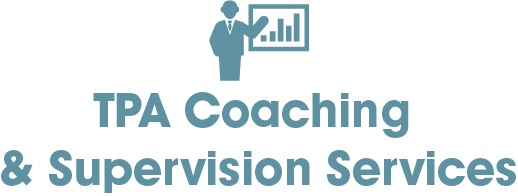Supervision and Peak Performance
- by Tim Anderson
- •
- 11 Mar, 2019
- •
Ideas for helping your team consistently work at peak performance.

How can supervision support your organisation?
One of the biggest challenges I come across when talking with senior leaders and business owners is the ability of their managers to consistently perform at their peak.
The organisations have invested thousands of pounds in training and development but often wonder why they are not seeing the investment turn into high performing teams and individuals.
One client mentioned to me that she had invested in training and development and had also initiated a coaching support programme for the new managers. This appeared to work well at first however a year or so later, she did not feel the organisation had seen the improvement she had imagined or that had been intimated as being attainable by the training and development team.
The challenge appears to be how to make the change sticky and sustainable over the long haul. How can they ensure great management practice is the norm? How can the managers consistently deliver at peak performance?
This got me thinking of how we address this within coaching, where the vast number of professionals across the globe are committed to being lifelong learners and actively practice continual improvement of practice. The aim of CPD is to support the coach operate consistently and on a journey of continual improvement.
For those of you who are involved with social care work, psychotherapy, counselling, and coaching you are probably familiar with supervision within the context of your own support and development.
According to the Scottish Social Service Council: visit
“Supervision is a process that involves a manager meeting regularly and interacting with worker(s) to review their work. It is carried out as required by legislation, regulation, guidance, standards, inspection requirements and requirements of the provision and the service. The purpose is to monitor tasks and workload, solve problems, support workers in dealing with complex situations and moral and ethical dilemmas and to promote staff development.”
“Supervision aims to provide accountability for both the supervisor and supervisee exploring practice and performance. It also enhances and provides additional evidence for annual performance management and review. Supervision has a particular focus on developing the supervisee in a way that that is centred on achieving better outcomes for people who use services and their carers.”
Within my own discipline as an executive coach I enjoy supervision as a method of enhancing my coaching and mentoring skills. It is expected as part of my professional membership and provides me with three primary facilities:
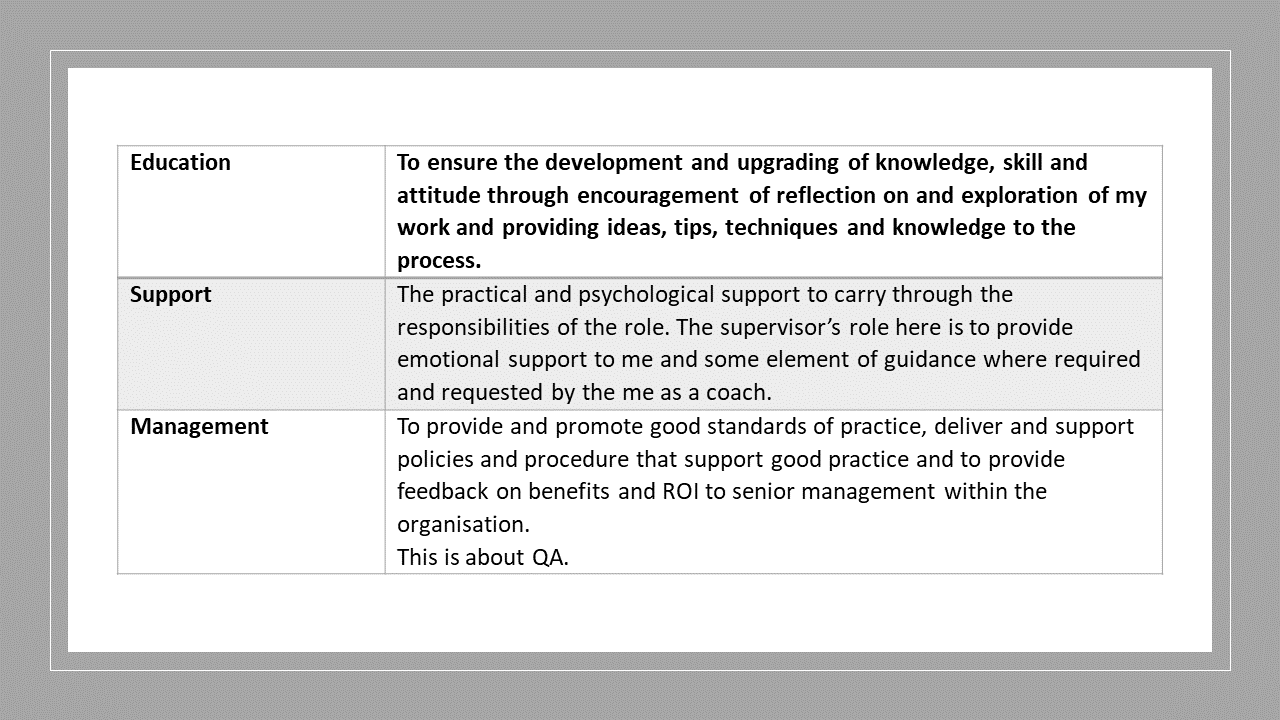
The role of the supervisor in coaching
Supervision within coaching is a method and process to help coaches who are working on a 1:1 or group basis and provide a formal opportunity to share, in confidence, their case load activity to gain in sight, support and direction for themselves and thereby enabling them to better work in the service to their coachees.
It is an opportunity for those who are coaching to build and improve on their coaching skills and as such become better coaches. It can form part of continuous professional development (CPD), help self-guard their wellbeing (and that of their coachee’s) and finally act as a process of quality assurance for the organisation that coaching is being used to good effect and in a fair and equitable way.
This process has served professional service providers well for many years and is fundamental as a requirement for most accredited coaching programmes globally.
Professor Peter Hawkins has written extensively about taking a more systemic approach to coaching practice and I wrote in my own blog here about the advantage of taking coaching from a 1:1 focused engagement and consider the coachees challenges in a wider context.
Coaching supervision supports coaches to widen their perspective by considering the systemic effect of their client’s decisions and actions. It can be illustrated as such:
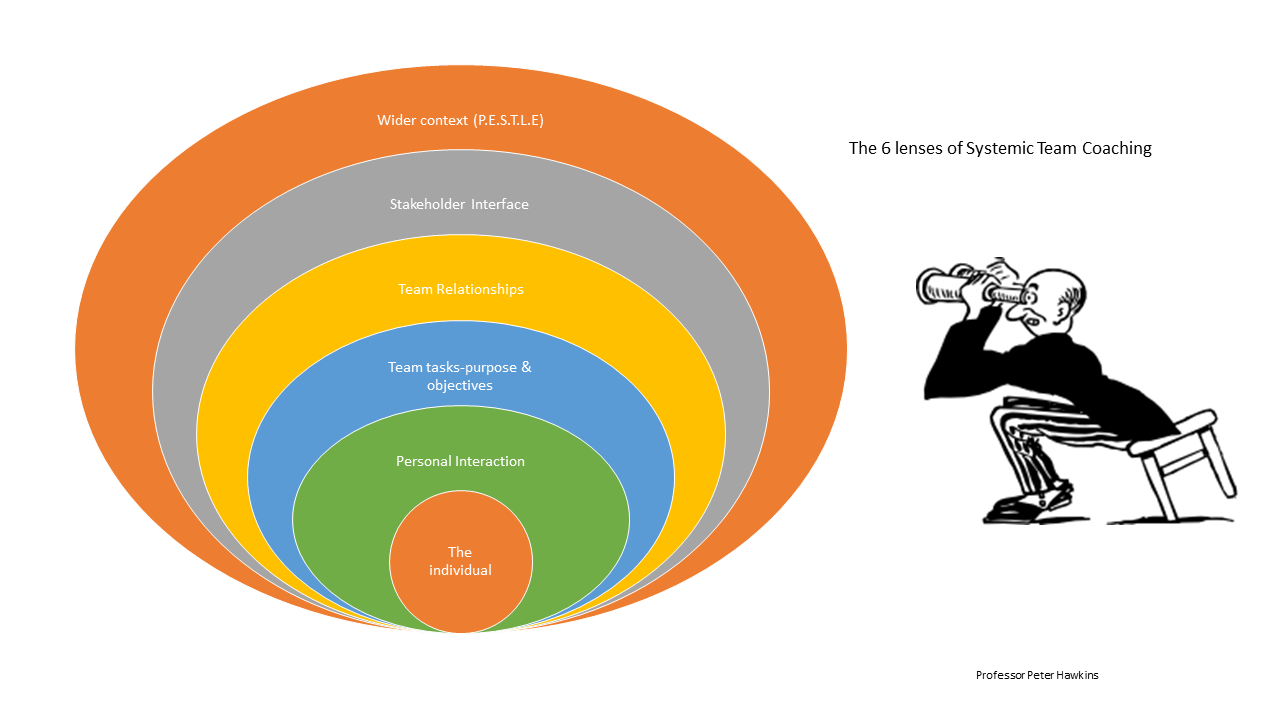
The advantage of the supervision interaction is to support
the coach to consider a wider view of what’s going on. Ensuring they can probe
deeper if necessary, in subsequent interactions and in turn help their client
to consider a wider perspective on their reflective practice.
The case for supervision to support managers.
So, if this technique is working well for the support service and has been part of good practice for over 40 plus years, I wonder why the solution is not used more within the world of management and management development?
Supervision delivers on several fronts as mentioned, and if used effectively can help an organisation deliver on its aims of having consistently high performing managers that think wider then just the direct challenges faced by their respective teams.
Why might this be necessary?
Let us consider the function and tasks associated with our modern managers and leaders. It is a complex process, and this can be highlighted by some examples of what modern management consists of.
The modern manager needs to be able to lead their team, manage their direct reports, be able to interact with wider stakeholders both inside and outside of the organisation which in turn demands fantastic communication skills and the ability to build effective and professional relationships.
They require financial, operational and project management skills as well as an ability to manage and cope with their own life demands. It goes without saying they need to be highly self-motivated to do so and in good health and spirit.
The modern manager should be able to take responsibility, step up to the challenge, be agile and be able to manage the stress that will inevitably come with the role. They need to be a professional ambassador for your organisation.
According to the Chartered Management Institute (CMI) the following is a list of skills an employer is looking for from the modern manager.
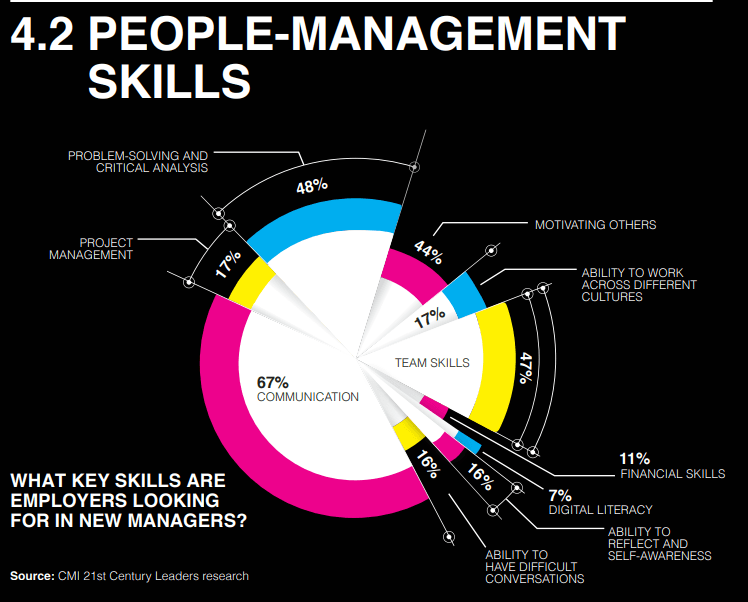
John P Kotter, author and Professor at Harvard Business
School listed the role of a manager and the role of a leader as consisting of
the following:
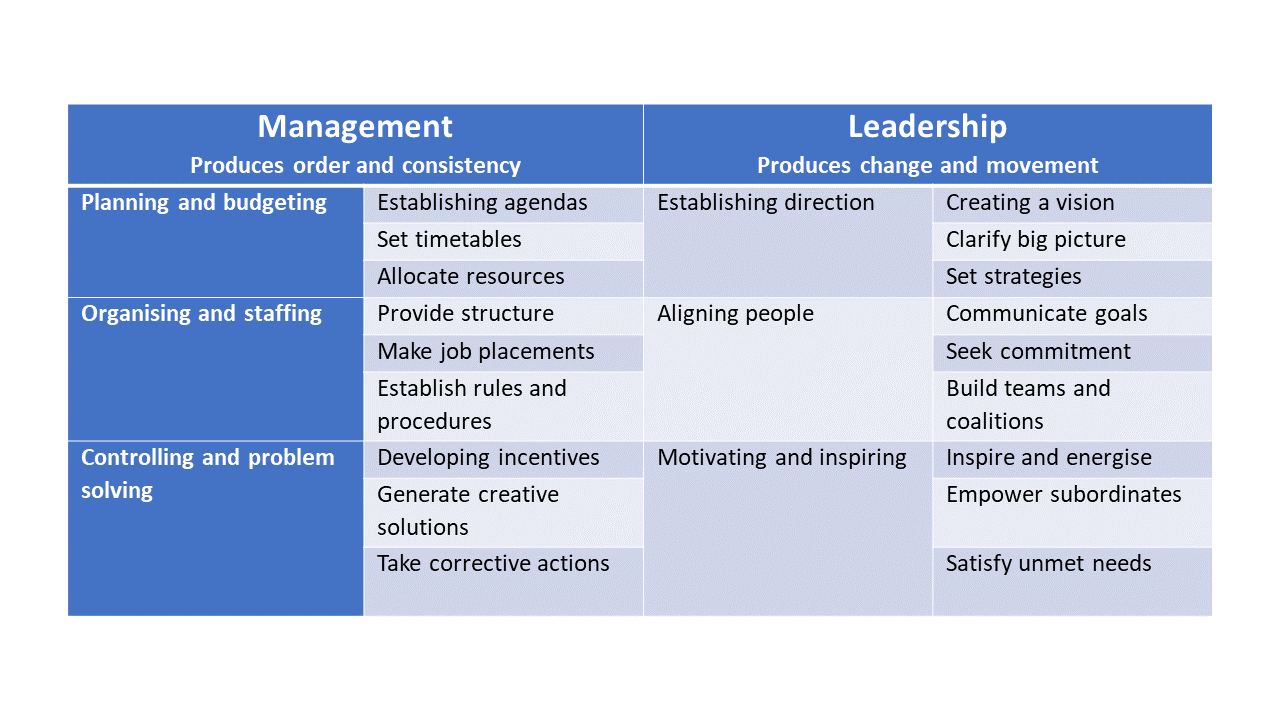
In his book The Next Level: What Insiders Know About Executive Success, Scott Eblin considers Personal Presence, Team Presence and Organisational Presence as three core traits that great modern leaders portray. I posted blogs here ,here and here recently on his work but in short, Eblin brings in an additional layer of complexity over and above the skills factor when he explains about the importance of presence of a leader.
Clearly, there is a lot to consider when we explore how effective our managers are. There is a clear case for ensuring we train all our managers and leaders to deliver on the modern work place needs.
The development of our managers has progressed in most instances from classroom-based training and embraced work-based learning methods that have been influenced by the works of people like Malcolm Knowles (The Adult Learning Theory – Andragogy), David Kolb’s Experiential Learning and Jack Mezirow’s Transformative Learning.
The concept of action-based learning supports the learner when that take their new-found knowledge into the work place and practice, practice, practice. Take a look at an earlier blog I presented here for our own views on work-based learning. Or visit the Spark page https://spark.adobe.com/page/KnrKxRUwlrczT/
The investment in coaching services can help support the learner through a change process, helping the learner apply their knowledge and reflect on how it is going.

With our new managers we can support their learning with
coaching and mentoring interventions. This process may extend into our senior
leaders where Mezirows transformational learning techniques support change
rather than skill-based development of newer managers.

This style of intervention supports senior management change in terms of their attitude and their ability to switch from past mental models that have served them well and adopt new methods of working that might be more conducive for senior leadership in the 21st century.
The coaching support generally will stop once the manager believes they have taken the specific change/ improvement process as far as they wish, or when the budget runs out.
Ensuring the changes and performance enhancement provided by the earlier intervention is sustained is the on-going challenge we eluded to at the start of this blog.
So how can supervision help deliver on these challenges? How can it ensure that once a manger has the ability and knowledge to effectively manage, that they can consistently deliver to their teams at their peak?
Linking supervision to supporting your managers
Taking the concept of a trained, professional supervisor who can support your line managers to consider their practice might provide a solution.
This is a different relationship than a line manager supporting their team, this combines the experience of a trained supervisor providing regular support and guidance but without the direct authority that might hamper the relationship that is part of a line managers role.
Areas identified for improvement and challenges around delivering consistency can be raised by the manager without fear of being penalised or downgraded if a performance incentive is in operation.
The intervention is not directly linked back to performance in a negative perspective and the feedback is provided in a spirit of supporting the individual. How can we help the manager think better? How can the manager improve their impact on their team? How can we help the leaders create the space for their own teams to be successful?
The sessions respect the client supervisor relationship based on mutual respect, trust and none judgmental in feedback.
Where the supervisor is supporting several managers, perhaps from one or several different divisions of an organisations, the continuity of the supervisor enables them to spot recurring patterns or models of behaviour that might not get spotted within the standard up/ down management process and annual appraisals. Supervision as a process can provide a left, right and diagonal view of what is happening.
Without compromising the confidentiality, the supervisor can often observe and share specific information that help highlight specific areas where a value contribution has been made thus helping justify the investment made on development. This can be reported back to the L&D or board.
Their role will extend to ensuring quality of delivery is maintained, holding their client to account and sharing opportunities for improvement.
Supervision can be the stimulant for continual improvement of management practice within the organisation. It can act as the support for embedding change where such change initiatives are preferred.
Benefits to the organisation.
• Promotes best-practice in the workplace.
• Gives organisations confidence their staff are practicing safely and
· ethically.
• Encourages a positive culture.
• Increases employee skills in decision-making and problem solving.
• Reduces staff turn-over.
• Enhances professional development.
• Can help evidence ROI on staff development
• Stimulates and supports change initiatives.
I wonder if others have experience of widening the use of supervision to support management and other professional service providers that they can share with the readers?
Your thoughts are more than welcome.

In these challenging times I would like to share some thoughts with you why being people focused will have longer term benefits once we move out of lock down and toward more favourable times.
The term of the month seems to be furlough and I understand the need for businesses of all shapes and sizes to take whatever steps they need to take in order to survive however we would urge all organisations that have needed to take these measures not to fall into the trap of “out of sight out of mind”.
Never before have we had an opportunity as business owners and organisational leaders and managers to show that our people focused cultures are indeed what we do and how we act. I wonder how we might meet this challenge.
Taken from an excellent guide from the Chartered Institute of Personnel and Development ( CIPD) to an explanation on the rules and regulations around furloughed workers here we can provide a brief explanation furloughed working regulations.

I wanted to share a coaching session I provided to a client recently who brought to their coaching session a topic on how to support them in an up and coming bi-annual performance review. It was an interesting use of a coaching session and it got me thinking, why do we still carry out performance and staff reviews in methods created in the last century?
Employees the world over have been subject to the annual appraisal for as long as I can remember, I think I attended my first one back in the late 1970’s, I am not sure they have moved on much since then!
Back to my coaching session though. The coachee had suggested we look at areas such as how she could communicate a rich and powerful story that could describe many of the great things she had achieved since her last review and which were not captured by the standard KPI’s that everyone was measured against in the organisation. She wanted to include feedback on the things she had done since she had been promoted late last year, so her manager was aware of her growth. And she wanted to widen the theme, so the conversation did not major on merely what she had done this past month or so.
My client wanted to explore with me how to make less visible things visible; she wanted to include items such as being a team player, being seen as trustworthy by her staff, showing up to work with the best version of herself on offer and how this delivered on her being considerate and respectful of the team members. What she was eluding to was how to get the strengths in soft skills onto the agenda?
All too often the agenda that is set for the review is to meet the needs of the manager and that of the organisation, ticking off an event in the calendar and ensuring that key business drivers are being met. This is fair but also one sided and whilst it might support short term deliverables the business needs, it does not address the team members own career aspirations very well, neither does it address some of the harder challenges facing many organisations today in terms of recruiting, retaining and developing their workforce for the 21st Century challenges they face.
Two or three other areas we considered exploring were around the review process itself and how we might be able to keep key things top of mind continuously and not just at review time. How best to do this?
We considered the difference between performance reviews and development reviews? How can the attendee ensure both performance (an historic measure) and developmental conversations (taking a future perspective) take place within the meeting? We considered how to raise awareness of how the softer challenges were important in terms of reaching the organisational goals.
I was impressed with the approach my coachee had taken to preparing for the forthcoming meeting and that she had considered bringing this topic to coaching, she also mentioned how she had talked with her peers which in turn had added to the depth of information she was using to be able to best plan and approach the meeting. Clearly there was some deep thought from my client around how best to take advantage of the forth coming review. She acknowledged and accepted that the three key areas her company measured would need to be addressed but she wanted this to be a two-way process.
On reflection of the session I considered several things, firstly I wonder how well her manager was preparing for this meeting? I have had several coaching sessions with senior managers who have shared with me that whilst they always intend to approach the annual reviews with a greater level of planning, by the time review season hits, other dynamics have taken preference to the allocated planning time and so they end up with more of the same as last year.
I also considered the power of regular reviews; these are opportunities to learn and plan for both the manager and their employees. I am reminded of Bernard Marr description of why we measure from his fantastic book Managing and Delivering Performance ( p141) where he suggests we measure for three reasons, firstly because we do not trust our team will perform ( pretty negative), secondly because we have to (compliance) or thirdly, because we want to provide rich information that can help us improve. Of course, we all aspire to the third of Marr’s reasons, but I wonder how well we manage the review process as managers and how rich and varied is the quality of the data we use when carrying out such reviews?
It occurred to me too that most organisations offer reviews as a type of snapshot. There is nothing wrong with this in theory, and an annual review is better than no review at all. I noticed my client’s company were carrying out reviews twice a year and I know other organisations where I coach that do so each quarter. Each organisation uses a variety of tools to collect data that can be used during the review such as 360% surveys, performance impact data on internal and external customer satisfaction, team retention. But generally, this data is also provided as a snapshot. And yet, with the advances in technology and data integration it must be feasible to provide accurate and up to date information that each employee can use on a weekly or daily basis to help identify improvement areas. By providing up to date and regular data to our teams we can ensure the performance reviews are not the dominant process, or worse, continue to be the only way we support our employees. By providing data that our teams have regular access to, the employee can take ownership of their own development as part of their regular routine.
With the frightening statistic that 87% of employees worldwide are not engaged at work (Gallup 16) and considering that 50% of all millennials in the workplace are asking for more feedback and further, where many of the workforce in 2020 are working remotely and often with more flexibility with working hours, I wonder what your organisation is doing to support your workforce and helping them to feel included, invested in, ensuring they feel part of the future plans of the organisation and, most importantly, supported in being the best they possibly can within their respective roles?
I am interested to hear from you on processes your organisation is adopting to meet these people challenges, and what technology are you using, or considering using, to help support these challenges going forward.
It would be great to learn more.
And on a final note, one of the frustrating elements to a review is when the team member does not come prepared, here is one amusing example that springs to mind.
https://www.youtube.com/watch?v=IkYUDQCYGHA&t=80s
Working as a coach and as a consultant I have been quite amused by the number of organisations that have used “Vision 2020” as a title when launching new strategic initiatives. As we fast approach the end of the decade and reach 2020 I wonder what organisations have achieved in terms of supporting their teams and leaders to deliver on their “2020 visions”?
The time for 2020 vision is fast approaching and is accompanied by challenges such as:
· 87% Of employees worldwide are not engaged with their work (Gallup 2016)
· Leaders are increasingly required to support staff in complex and multicultural environments.
· Senior executives are managing teams that are often working remotely and across time zones.
· Many are managing teams where they do not have direct authority.
· Dispersed workforce's are having to be managed within the lens of cost reduction and reducing the organisations carbon footprint.
· Compliance continues to be a challenge where legislation is produced locally, causing duplication of cost across nations and borders.
· Where the influence of technology is enabling personal values of different culture and generations across the globe to consider life with a different and fresher mindset.
· Where ease of communication and connectivity has invigorated topics such as personal health, well-being and the sustainability of our planet.
· And where wealth creation and imbalance regarding the distribution of such wealth is now far wider than 20 years ago and yet technology continues to make the world smaller and as such leads to tension and dissatisfaction.
So, what is the role of the 21st Century leader? Certainly, the modern leader is no longer required to be the knight on the white charger, fixing all in front of them, but perhaps now is required to be the facilitator of change.
When considering the past, present and the future we need to ask:
How well did we prepare managers and leaders to work in such a VUCA world where change is the norm?
What support mechanisms are delivering the outcomes we NEED to see today?
What initiatives and development methods will support our leaders in contributing to the success of our respective organisations in the future to help meet such challenges?
As we approach a new decade, it might be a great time to stop, reflect and consider what organisations need from their leaders and senior executives.

Hitting the glass ceiling, being over-looked for promotion
or perhaps you are just head down and working hard and looking forward to
promotion……. but getting nowhere?
Getting to that next level may not be all about performance, hard effort and working long hours.
According to Harvey J Coleman from his book Empowering Yourself, how well you do your job may have very little to do with how successful you are in your professional career. Coleman suggests that how well you do your prescribed work will account for only about 10% of your overall success.
Coleman suggests that career success is based on the 3 key elements of Performance, Image and Exposure (PIE):

With so much noise surrounding coaching these days it is hard to distinguish between good practice within coaching and mentoring and interventions that are merely responding to a fashionable trend.
Coaching has grown of age over the past 30 years, with many organisations using both internal coaches and mentors, as well as using external experts to deliver outstanding individual results. Yet despite this maturity within the coaching and mentoring area, I still come across pockets of excellence of business coaching that have failed to move from isolated examples into long term and sustainable methods of doing business. The main reason for this I believe is the lack of published and substantiated success of how coaching and mentoring can impact effectively on corporate objectives.
Most coaching and mentoring interventions appear to remain at the 1:1 level. This is not surprising as coaching and mentoring is often provided to support the individual, however the importance of the individual’s development should have a wider impact than on just their own performance and ability.
For coaching to be able to demonstrate how it benefits the greater success of the organisation, we need to consider the knock on affect they have within their role, their department and ultimately on how they contribute to the success of the business.
Professor Peter Hawkins talks about the systemic approach to coaching where a coach considers the wider implication of a clients challenge when supporting in a 1:1 session. This can be illustrated below.

For those of you old enough you may recall the BT adverts of the early 1990’s which featured the late Bob Hoskins where he told the viewer “It’s good to talk”!
But how well do we really communicate, sure we have the corridor conversations with colleagues whilst we are at work. And we have countless meetings with internal and external contacts.

He argues that developing these core traits often requires an executive to drop certain habits and clear the path to concentrate on developing good behaviours
In this last of three articles around increasing executive presence I will consider the impact that Organisational Presence can have on your ability to become a great leader.
Eblin highlights the following areas he feels should be developed by a manger and the areas a great leader should drop in order to thrive on organisational presences:

In the second of three articles around increasing executive presence I will consider Team Presence as an essential core competence.
Eblin considers team presence in terms of team reliance over self-reliance, defining what to do rather than telling how to do it and finally to shift from responsibility for many results toward being accountable for many results and allowing your team to share and prosper in the departments success.
So how can coaching, training and development of you as a leader enable you to develop the correct environment to deliver modern-day leadership services to your team and wider stakeholders.
Within this article I will share my thoughts and experiences around team presence and some of the methods I have been able to use to help executives enhance their ability in this area.
